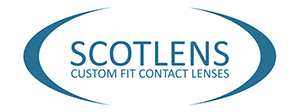HIGH MYOPIA CORRECTION
Learning Outcomes
After completing this module you should:
- Be able know the corneal changes and the limit on power change
- Know the benefits of custom lens design for high myopia
- Know the baseline topography metrics that indicate a higher chance of success
CORRECTION OF HIGHER MYOPIA
Night lens correction will generally provide vision correction for patients up to -5.00.
Higher corrections are possible. When fitting higher powers the changes on the cornea will result in a smaller treatment zone with higher power change within it. Higher power patients can be more at risk of corneal staining.
Extra care is needed with higher power patients that their vision is adequate in all lighting conditions, and that their corneal maintain good health with no staining.
CORNEAL CHANGES IN HIGH MYOPIA
The orthokeratology process changes corneal epithelium thickness, causing thickening in the mid peripheral cornea. The epithelium can only change in thickness by approximately 20um (Fig. 1).

When the treatment zone has a higher power the thickness change limitation means the treatment zone size will be smaller (Fig.2).
A small treatment zone even on the visual axis will increase aberration within the pupil. If the treatment zone is away from the visual axis high aberrations and induced astigmatism are usually caused.

LENS DESIGN CHANGES FOR HIGH MYOPIA
Design changes are needed for high corrections. The base curve of the lens becomes increasingly flatter than the cornea as power increases.
Additionally to this, the Compression factor increases making the difference between the corneal curvature and the base curve of the lens greater.
A -2.00D correction with a compression factor of 1.00 will have a 3.00D tear lens. A -6.00D may need a compression factor of -2.00 meaning the tear lens is -8.00.
With a standard optic diameter this would result in:
- Excessively thick tear lens thickness (Fig. 3)
- This can be prone to trapping bubbles when inserted resulting in dimple veil
- Increased lens thickness resulting in greater interaction with the lid and possible decentration from the visual axis.
The NocturnalTM geometry for high powers has a reduced optic diameter with increased reverse zone diameter preventing excessive tear thickness. It also has an increased alignment zone diameter brining the AZ closer to the central cornea to aid centration.(Fig.4)


CANDIDACY FOR HIGH MYOPIA
Physiological responses vary between individuals. There is no way to know if high powers will be achievable for a patient. It may take a number of lens changes, all while the patient is partially corrected. Patients who are unable to manage this period of time as they achieve full correction are not candidates.
Topography indicates patients that are good candidates for high correction. Topography can not anticipate lid interaction so even candidates with optimum topography may not be successful.
The metrics we assess from the topography are (Fig.5):
Keratometry or Sim K
Low power, flat corneas will not be able to be changed in power as much as higher power, steeper corneas.
Eccentricity
The orthokeratology process sphericises the central cornea in the treatment zone. If the baseline cornea has low eccentricity it can limit the possible correction. Higher e values are desirable.

A bullseye treatment zone is essential in high myopia if a full correction is to be achieved. Corneal centre, displacement and symmetry are the most important baseline indicators the treatment zone will be bullseye.
Corneal Centre (Angle Alpha) (fig.6 top)
High power treatment zones must for on the visual axis. The geometrical centre of the cornea needs to be close to the visual axis. This value is shown as the Iris Centre x with the Medmont topographer then the HVID is defined. This is the angle alpha and may be defined as that with other topographers.
Corneal Displacement (fig.6 middle)
The alignment zone will contact the cornea at 7.0mm. The peripheral contours from this diameter may skew from the visual axis. The direction and distance of this may need to be estimated. It is accurately measurable with the Medmont using the CLOZ tool.
Corneal Pattern (fig.6 bottom)
The pattern of any astigmatism needs to be symmetrical and limited to the central cornea. Limbus-to-limbus pattern or asymmetrical astigmatism reduce the maximum correction possible. These patients will have low sag difference between the meridians in the region of the alignment zone.
An indication of the values of these metrics is shown in the Candidacy Metrics table.

CANDIDACY METRICS

CASE EXAMPLE HIGH MYOPIA
The baseline values for the example below indicate good potential for higher correction. Steeper than average Ks, average e, average HVID. The most important indicators iris centre, displacement, symmetrical pattern and peripheral toricity are all low.

The patient is wearing a NocturnalTM design lens with 5.5mm optic and compression of 2.00.
This patient achieves 6/6+ acuity.
The treatment zone is bullseye and there is no subjective glare.
This result is a combination of the lens design and the corneal metrics resulting in a bullseye treatment zone.

HIGH MYOPIA CORRECTION
Summary
- The epithelial thickness changes possible with orthokeratology limit the power and size possible
- Lens design needs to change for higher powers
- Measurements shown at baseline topography can indicate patients may be able to achieve higher correction
- An anticipated bullseye treatment zone is needed for a successful high correction
